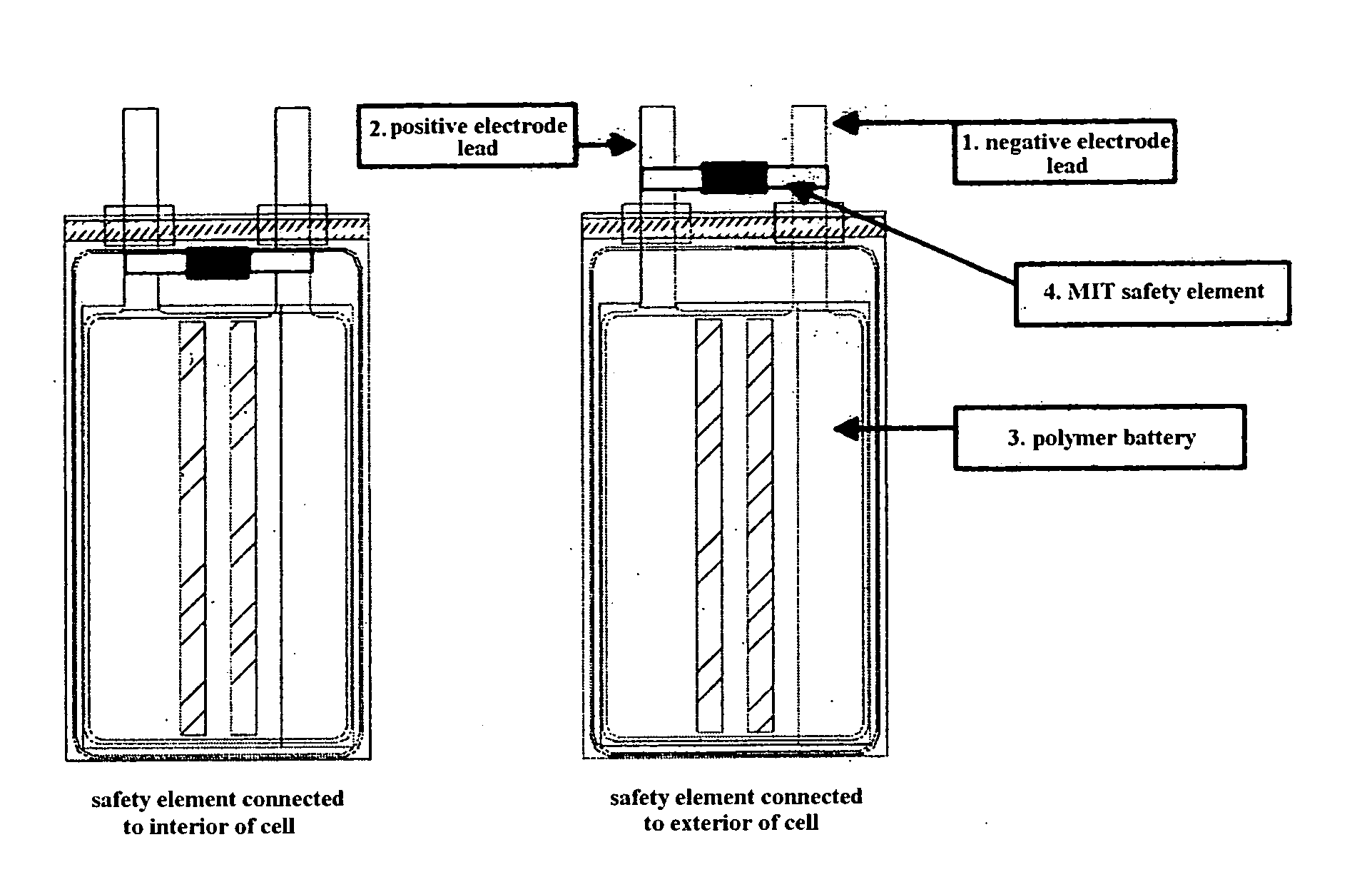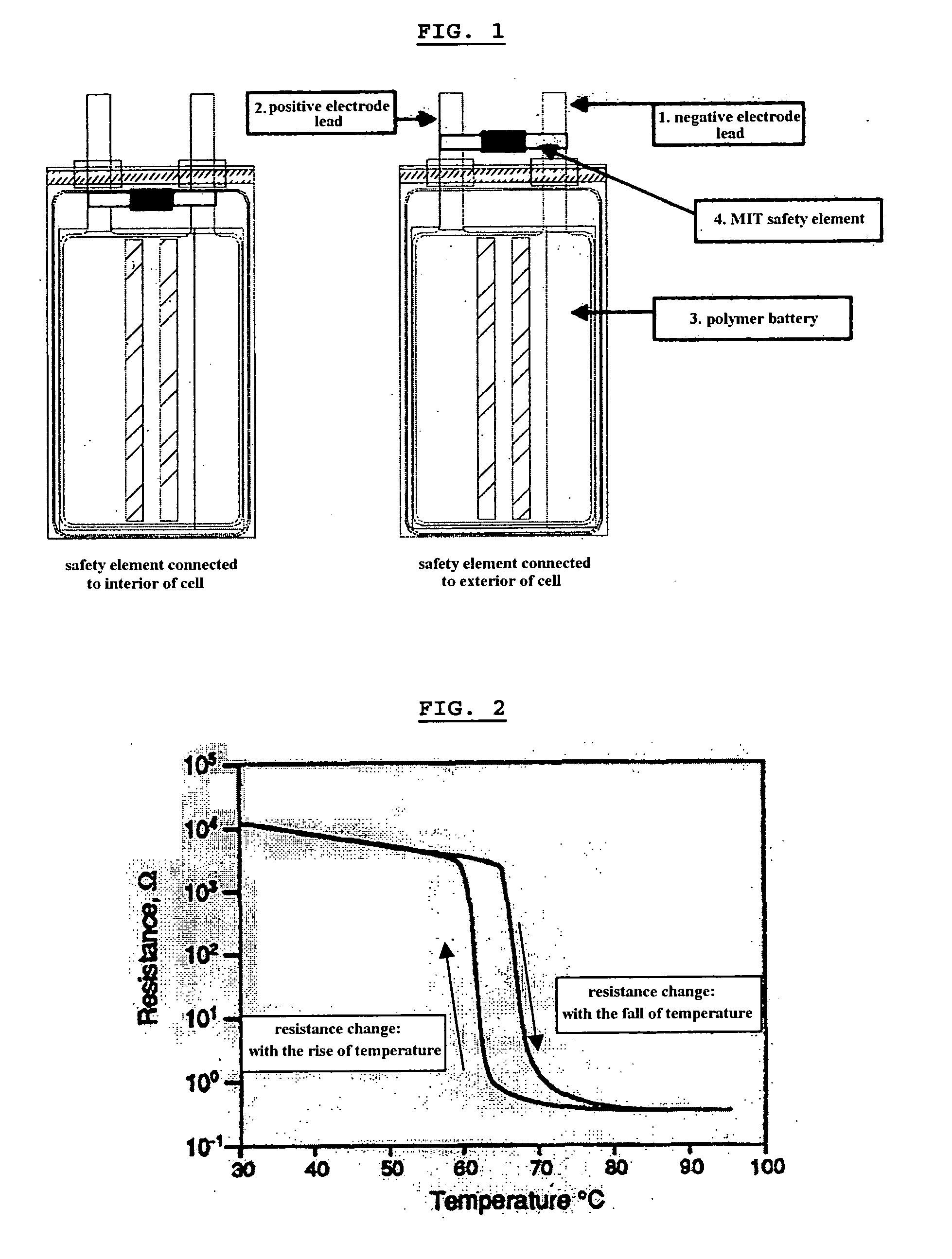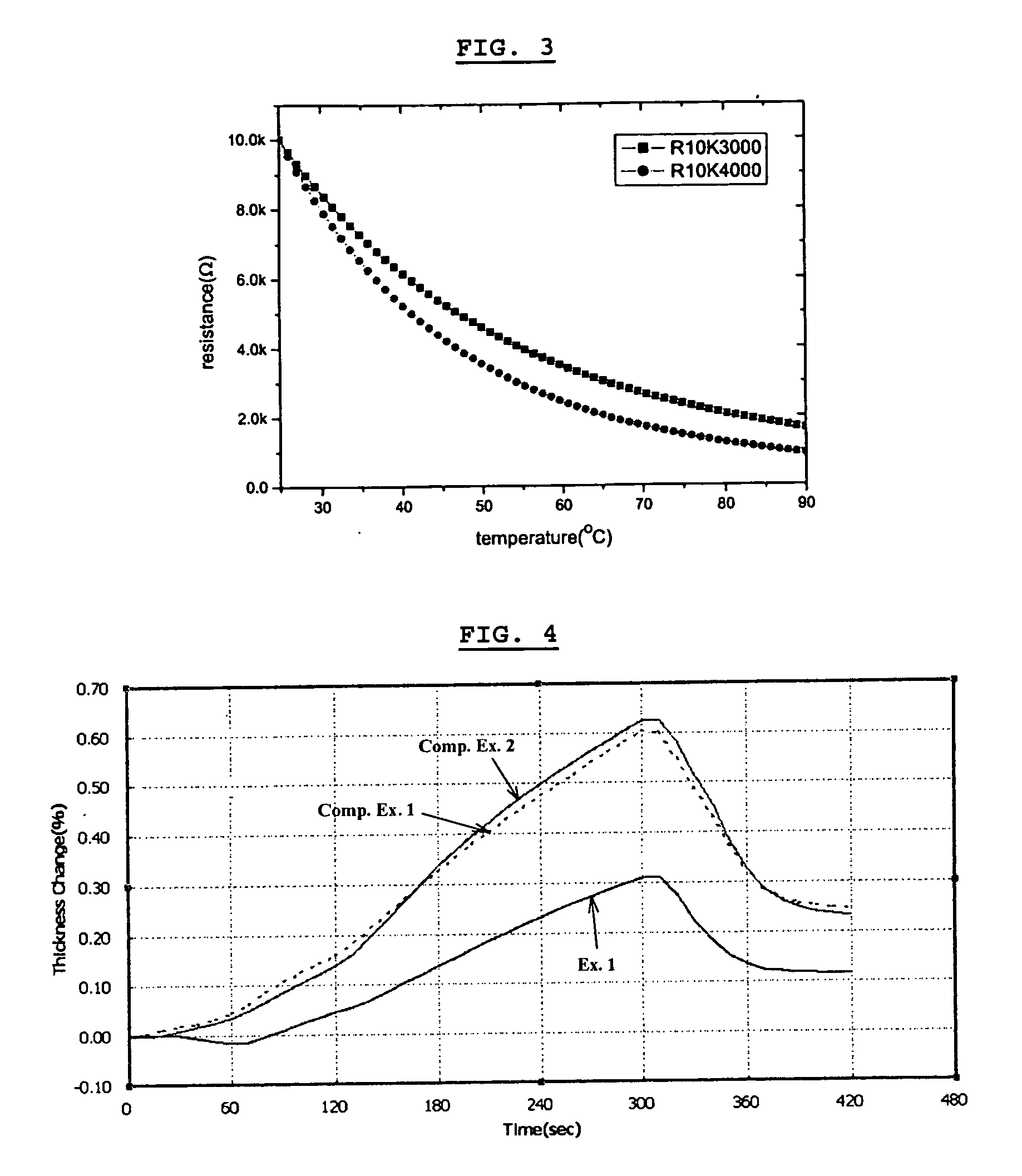Safety element for battery and battery with the same
a safety element and battery technology, applied in the field of safety elements for batteries, can solve the problems of lithium ion secondary batteries subjected to swelling, danger of firing or explosion, dissolution of positive electrode surfaces, etc., and achieve the effect of enhancing battery safety
- Summary
- Abstract
- Description
- Claims
- Application Information
AI Technical Summary
Benefits of technology
Problems solved by technology
Method used
Image
Examples
example 1
[0043] A cell was constructed such that its positive electrode consists of positive electrode active material (LiCoO2), a conducting agent and a binder (composition ratio of 95:2.5:2.5), and its negative electrode consists of negative electrode active material (carbon), a conducting agent and a binder (composition ratio of 94:2:4). An insulating membrane was interposed between the positive and negative electrodes, EC:EMC containing 1 M LiPF6 was used as an electrolyte, and a pouch was used as external packing material. In this way, a polymer battery was formed. An MIT safety element (vanadium-based oxide) having resistance of 25 kΩ at a normal temperature was connected in parallel between the positive and negative electrode terminals of the so-formed polymer battery.
[0044] (1) For an elevated temperature test, the polymer battery was placed in a oven, and change in thickness of the battery was measured while an oven temperature was raised from 25° C. to 90° C. for an hour, maintain...
PUM
| Property | Measurement | Unit |
|---|---|---|
| critical temperature | aaaaa | aaaaa |
| critical temperature | aaaaa | aaaaa |
| temperature | aaaaa | aaaaa |
Abstract
Description
Claims
Application Information
 Login to View More
Login to View More - R&D
- Intellectual Property
- Life Sciences
- Materials
- Tech Scout
- Unparalleled Data Quality
- Higher Quality Content
- 60% Fewer Hallucinations
Browse by: Latest US Patents, China's latest patents, Technical Efficacy Thesaurus, Application Domain, Technology Topic, Popular Technical Reports.
© 2025 PatSnap. All rights reserved.Legal|Privacy policy|Modern Slavery Act Transparency Statement|Sitemap|About US| Contact US: help@patsnap.com



